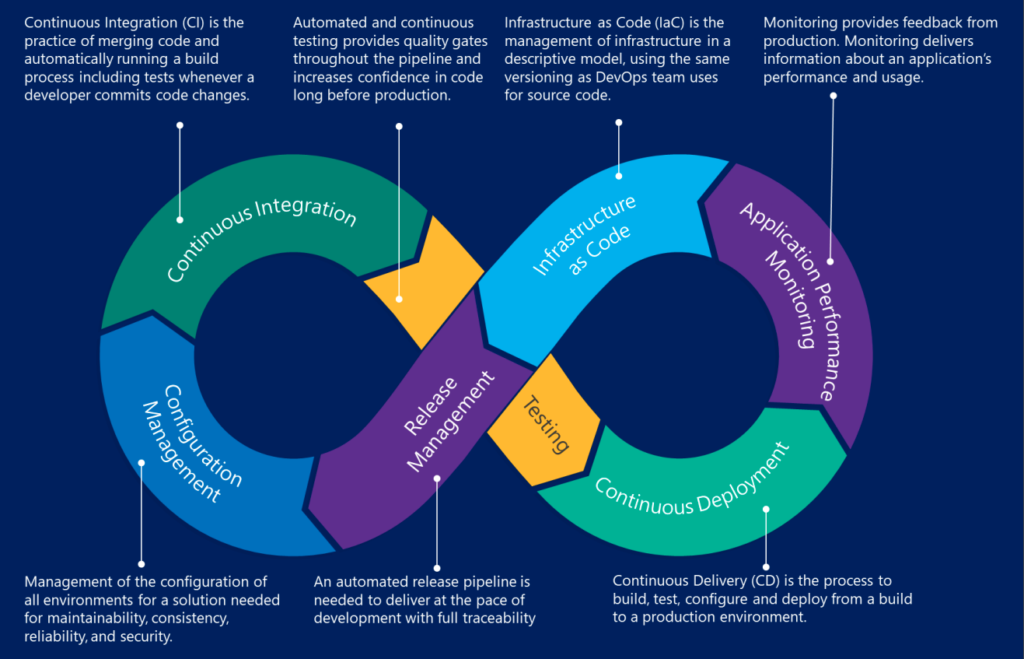DevOps Practices
Common DevOps practices encompass a wide range of methodologies, principles, and tools aimed at streamlining software development, deployment, and operations processes. Here are some of the key practices commonly associated with DevOps:
Continuous Integration (CI): Developers frequently merge their code changes into a shared repository, where automated builds and tests are triggered. CI ensures that code changes are continuously validated, helping to identify and address issues early in the development cycle.
Continuous Deployment/Continuous Delivery (CD): CD involves automating the deployment process to move code changes from the repository to production environments swiftly and frequently. Continuous Deployment automatically deploys changes to production after passing automated tests, while Continuous Delivery ensures that code is always in a deployable state, leaving the decision of deployment to be triggered manually.
Infrastructure as Code (IaC): IaC involves managing and provisioning infrastructure through code and configuration files. Tools like Terraform, Ansible, or AWS CloudFormation enable teams to automate the creation and management of infrastructure, ensuring consistency and scalability.
Microservices and Containerization: Breaking down applications into smaller, loosely-coupled microservices allows for greater agility and scalability. Containerization platforms like Docker and orchestration tools such as Kubernetes help manage and deploy these microservices efficiently.
Monitoring and Logging (Continuous Monitoring): Implementing robust monitoring and logging systems allows teams to gain insights into application performance, detect issues, and troubleshoot problems quickly. Tools like Prometheus, Grafana, ELK Stack (Elasticsearch, Logstash, Kibana), and others are commonly used for monitoring and logging.
Collaboration and Communication: DevOps emphasizes collaboration and communication among cross-functional teams. Practices like daily stand-up meetings, shared dashboards, and collaboration tools such as Slack or Microsoft Teams facilitate communication and knowledge sharing.
Automated Testing (Continuous Quality/Testing): Automated testing practices, including unit tests, integration tests, and end-to-end tests, ensure the quality and reliability of code changes. Test automation frameworks and tools help run tests automatically within the CI/CD pipeline.
Version Control and Git Workflow: Version control systems like Git, along with effective branching and merging strategies (GitFlow, GitHub Flow), help manage code versions and facilitate collaboration among developers.
Security as Code (Continuous Compliance/Security/Inspection): Integrating security practices into the DevOps pipeline by scanning code for vulnerabilities, implementing security best practices, and using tools like static code analysis or security scanning tools to ensure that security is considered throughout the development lifecycle.
Feedback and Continuous Improvement: Encouraging a culture of feedback, learning, and continuous improvement is fundamental in DevOps. Conducting post-incident reviews, retrospectives, and using metrics to assess and enhance processes are essential for ongoing improvements.
These practices aim to break down silos between development and operations, automate repetitive tasks, improve collaboration, and deliver software in a faster, more reliable, and efficient manner. DevOps practices can be adapted and customized based on the specific needs and context of an organization.

